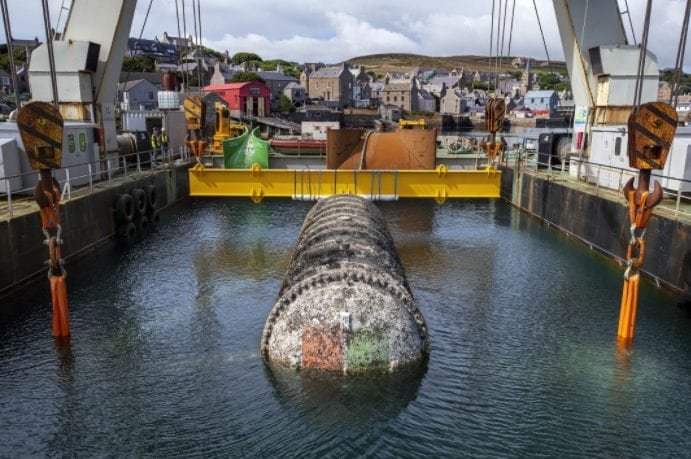Project Natick: Microsoft’s Underwater Data Center Appears After 2 Years

Microsoft sank a data center in the ocean some time ago. Now “Project Natick” has been brought back from the bottom of the ocean and the results of the experiment have been published. It was found that it would be a good idea to have more servers running underwater.
As Microsoft explained in a detailed report on Project Natick, it was successfully demonstrated that the experiment had a number of advantages over normal, land-based data centers. The mini data center, which is housed in a watertight tube the length of a shipping container, had previously been brought from the bottom of the Atlantic off the Scottish Orkney Islands.
The container with its 864 servers and a storage capacity of 27.6 petabytes was sunk there two years ago and has since stood on the ground in a water depth of almost 36 meters. Since then, Microsoft had left the container there untouched after sucking out the air and moisture before lowering it.
Eight times fewer failures than on land
According to Microsoft’s data, the self-sufficient underwater data center has been running extremely efficiently since 2018 and had a significantly lower failure rate than similar facilities on land. The absence of oxygen and moisture as well as lower temperature fluctuations significantly increased reliability, they say. Another factor is the lack of maintenance work, which in normal data centers often causes damage to hardware that is actually working properly when replacing defective components.
Overall, the reliability of Project Natick is said to have been eight times higher than that of a comparable data center of traditional construction. The main reason given was the lower susceptibility to corrosion due to the exchange of oxygen for nitrogen inside the tube. With the findings from the test, Microsoft now wants to tackle the use of underwater data centers in coastal regions in the long term in order to shorten the distance between its servers and the people living there and thereby make it easier for them to access its services.
RS News or Research Snipers focuses on technology news with a special focus on mobile technology, tech companies, and the latest trends in the technology industry. RS news has vast experience in covering the latest stories in technology.









